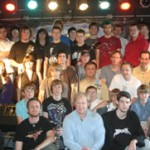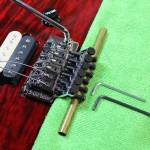Have you set clear written goals for your future and made plans to accomplish them? Here is a great guide line for setting goals.
In a popular urban legend, this is the question that was posed to new graduates of the Harvard MBA program in 1979 (or Yale class of ’53, depending on whom you ask). As the story goes, they found that:
- 84% had no specific goals
- 13% had goals, but not in writing
- 3% had clear written goals and plans to accomplish them
Ten years later, the same individuals were interviewed again. The 13% who had set goals were earning, on average, two times as much as the 84% who had no goals. Nice, but nothing compared to the 3% who had committed goals to paper. This overachieving bunch was earning an average of ten times as much as the other two groups combined! (What They Don’t Teach You in the Harvard Business School).
Fictitious though the study may be, goal setting remains a key topic in sport psychology, and appears to be a reliable influence on our level of performance and achievements. Here’s one publicly accessible study on the effect of goal setting on individual/team performance in rugby.
It’s about deliberately taking charge and being the driver in one’s own life, rather than the passenger in a self-driving car or habit-driven cruise control version of our life.
Unfortunately, nobody ever sits us down and teaches us how to set goals, even though research indicates that there are certain guidelines involved if you want goal setting to work.
4 Guidelines for Effective Goal Setting
What’s better – specific goals or general goals?
Advantage: Specific goals
Clear, explicit, specific goals are more effective than general goals. Vague goals like “doing your best” or “playing better” are not particularly effective.
Best, are goals such as
- I will have the intro to Eric Johnson’s Cliffs of Dover memorized by next Friday (defined perhaps by playing through the part without music at least once)
- I will be able to play the tricky fingered passage consistently in tune by the end of the week (defined by being able to play the passage in tune at least 4 out of 5 times)
What’s better – moderate goals or difficult goals?
Advantage: It’s a little complicated…
The more difficult the goal, the better performance is likely to be – up until a point. If the goal feels impossible or unrealistic to you, motivation will be low and you’ll be more likely to give up. However, the same is true of goals that are set too low and are not enough of a challenge.
Don’t pick an impossible goal of course, but I would suggest picking a goal that is exciting, motivating, and feels like a real challenge at the upper edge of what you believe you are capable of. When trying to figure out where your upper limits are, trust your gut and don’t forget that we have a tendency to underestimate our abilities.
What’s better – short-term goals or long-term goals?
Advantage: Both are essential!
Long-range goals are essential, but more immediate goals help us stay focused on the smaller steps that ultimately get us to our destination.
Try using the staircase approach. Get out a piece of paper and draw a staircase. Put your long-term goal at the very top of the staircase, and under each step, work backwards, writing down the intermediate sub-goals that will get you there.
What’s better – process goals or outcome goals?
Advantage: Process goals…most of the time
We live in a very results-driven society, so most of us quickly learn to focus on outcome goals (e.g. winning an audition) as opposed to process goals (e.g. staying focused on the music, listening to the other musicians in the ensemble, good posture, etc.). Problem is, we have very little control over outcome goals. You can have the audition of a lifetime, but fail to win the job because someone else was even more prepared and played just a wee bit better. Not much we can do about how others perform.
Furthermore, worrying about outcome goals that we can’t control (like what the audience is thinking, what will happen if we have a memory slip, how good so-and-so sounds in the warm-up room) takes our focus away from those aspects of our performances and preparation that we can control.
Then again, outcome goals (like imagining yourself winning the Cleveland job) can be extremely motivating and might help you stay focused on doing all the little things that will help put you in a position to win the job when the big day finally arrives.
At the end of the day, the combination of outcome goals and process goals is most effective, though it’s best to focus on process goals when it’s performance time and avoid focusing on outcome goals.
The One-Sentence Summary
“If you don’t know where you are going, you’ll end up someplace else.” -Yogi Berra




